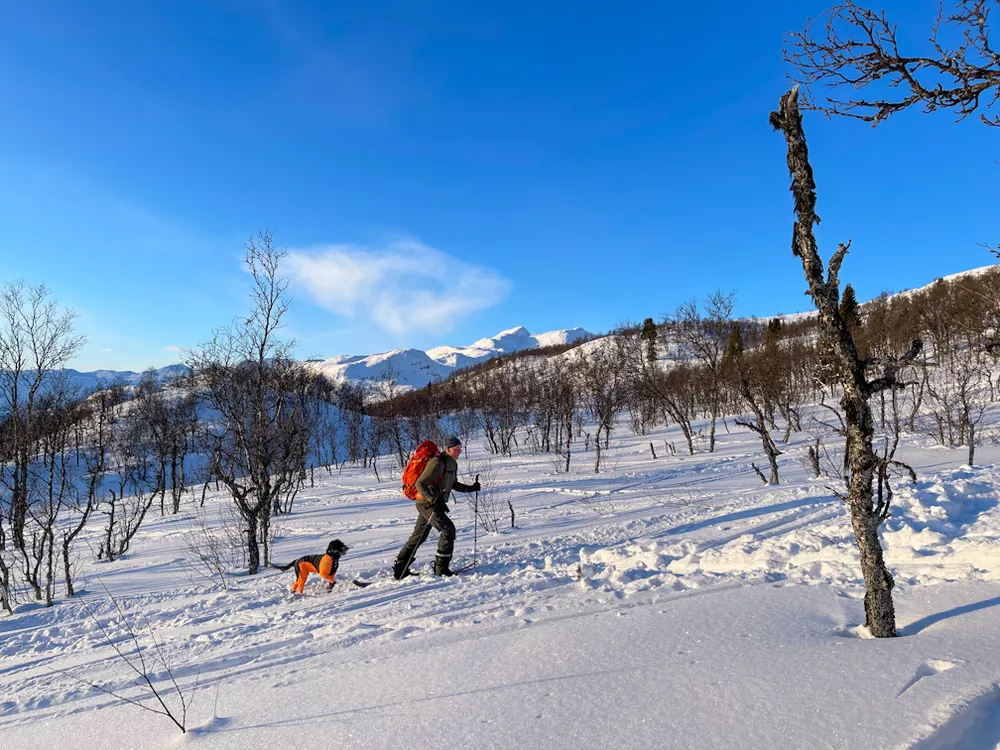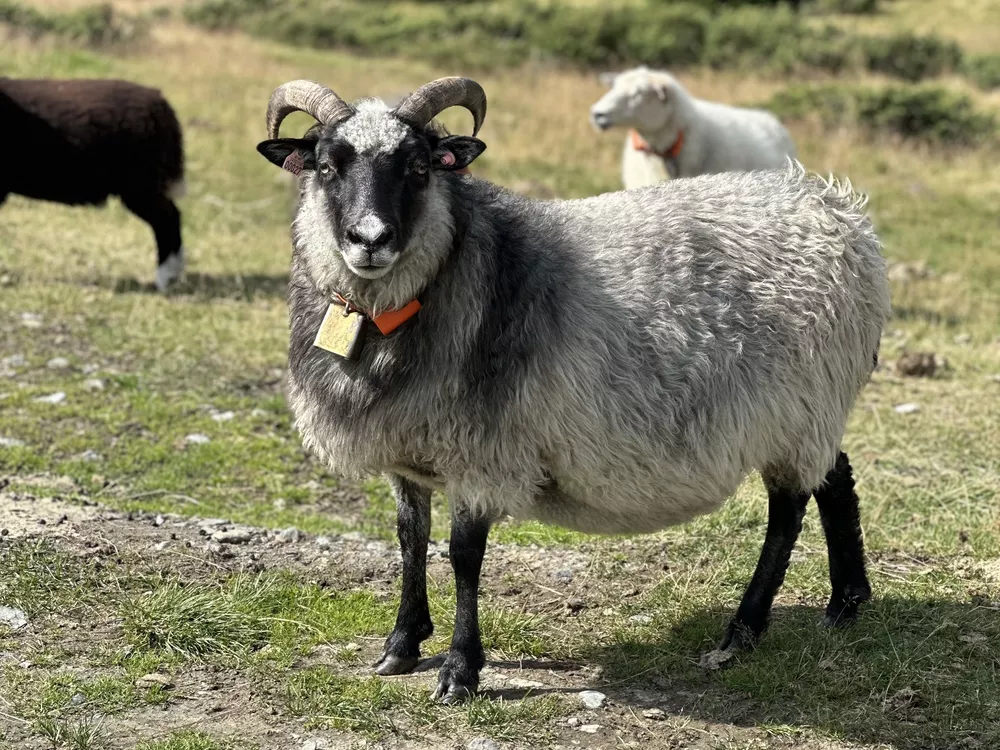Bring your dog
along in the mountains

We all know the classic Norwegian Mountain Code, which must ensure that you take responsibility on your trip. But in the same way that unforeseen events can happen to us in the mountains or on a walk in the city park, situations can also arise with our dog. The digital veterinary service FirstVet is therefore launching the Mountain Vet Rules in dog format, so that they too are safe on tour.
- When we have Easter holidays, we tend to be more active than usual, we enjoy ourselves more and generally live a little differently. Those of us who have dogs can perhaps become a little overambitious on behalf of the dog, and forget what it can actually withstand and is fit for. That's why we have developed these Dog Vet Rules, which cover exactly the same as the DNT's, but which are about what you should be careful with when it comes to your dog, says Trude Mostue, chief veterinarian at Firstvet.
Here are the Dog Vet Rules from FirstVet, so that the four-legged also has a good experience on the trip:
Plan your trip and report where you are going
Not everyone is equally enthusiastic about dogs out in nature, so be sure to have control over the dog, and consider whether to choose a less trafficked route for the trip. Show respect for other skiers, and keep the dog in a harness or leash - this can be fun for both dog and owner.
Adapt the tour according to ability and conditions
As with us humans, it is also worth thinking about how much activity the dog is actually trained for. It's easy to think that a trip isn't that long when you're skiing, but remember that the dog has to walk the whole way. If the dog is not in top shape, it may be wise to consider gradually taking longer walks every day to avoid sore muscles and sore paws.
Pay attention to weather and avalanche warnings
When it is completely bare or there is a melting period on the mountain, it is extra important to have paw socks on the dog. This is how you avoid wounds and injuries. Also bring paw cream so you can lubricate your paws, and an extra pair of paw socks, as they may fall off during the trip. If you are in an avalanche area, you must never let your dog loose. If Easter offers a lot of sun, you should also take extra care, especially in areas with snow that reflects the sun. Snow blindness and dry eyes are the most common inquiries from Easter Mountain. It is also worth noting that especially short-haired and light-haired dogs can also get sunburned, so bring sunscreen.
Be prepared for storms and cold, even on short trips
Frostbite is among the most common problems for dogs in the mountains, so make sure your dog is covered and warm. Also bring a blanket for the dog to sit on when you take breaks so that it doesn't get cold from sitting directly on the snow or ground. Especially on dogs with curly fur, snow and ice can stick, so cutting the fur before the Easter mountain can be a good idea, especially on the paws.
Bring the necessary equipment to be able to help yourself and others
On long walks in the mountains and fields, paw ointment is your dog's best friend to prevent sore paws. Then you make sure to keep the foot pads soft and elastic, so that the trip is as good as possible for the dog as well. In addition, it is a good idea to bring a bandage and wound salve in case the dog is unlucky enough to be injured by the steel edges of the skis, for example.
Make safe road choices. Recognize avalanche-prone terrain and unsafe ice
In steep and exposed areas it is extra important to have control over the dog. Both snow and stone can loosen when you step on it. Since Easter is late this year, it falls after 1 April, so it is also important to be aware that there is a curfew throughout the country. This also applies in the mountains.
Use a map and compass. Always know where you are
If the dog should manage to break free, it is important to be able to find out where it is. This is especially important for drifting dogs such as hunting dogs, so that they do not disappear in the mountain home. To avoid this, you should have a GPS transmitter on the dog, so that if it should disappear, you have control over where it is so that you can find it again.
Turn in time, there is no shame in turning
Pay attention to the signals the dog gives. You know your dog best, and are best able to understand it, but if the dog starts to slow down and walk with its tongue out of its mouth, it may indicate that it is getting tired. Remember that you are going back too, so it might be time to turn around. If you wait until it starts to go to bed because it is tired, you have probably gone too far.
Conserve your strength and seek shelter if necessary.
Taking breaks and gathering strength is important, both for animals and humans. Especially on longer trips, the dog also depends on energy replenishment. Water and feed for the entire trip are important for the dog, and remember that the dog should not eat Kvikk Lunsj or other travel chocolate, as chocolate can poison the dog in the worst case.
Insure your dog!
- Before you travel to the mountains, you should arrange for insurance for the dog, in case something should happen. With insurance from Agria, If, Gjensidige, Storebrand or Tryg, you also have conversations with the FirstVet vets included, so bring a power bank so you always have power!
Check Hemsedal Municipality's restraining order rules here
